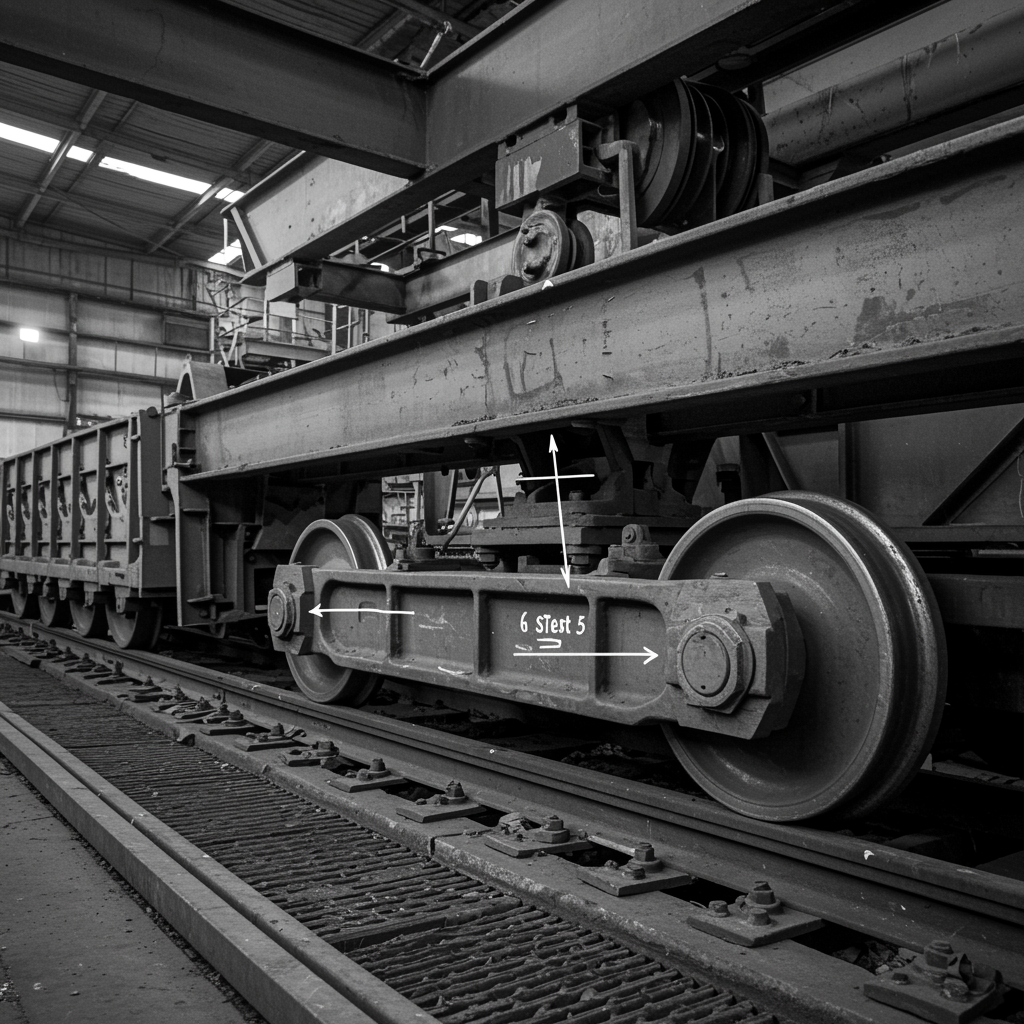

In mining and heavy industry, overhead cranes are essential for lifting and moving heavy loads. At the heart of these cranes lies a small but critical component: the trolley axle.
This shaft carries the crane wheels, supports the load, and transfers forces to the structure. Designing it correctly means preventing accidents, downtime, and costly repairs.
But how do engineers check if an axle is strong enough? Let’s break it down step by step.
1. What Does a Crane Trolley Axle Do?
Imagine a crane running on rails. The wheels that move the crane are mounted on an axle (shaft).
This axle:
-
Carries the weight of the crane + lifted load
-
Transmits forces from braking and acceleration
-
Endures repeated stress every time the crane moves
If the axle is weak, it may bend, crack, or break, leading to dangerous failures.
2. Types of Forces on the Axle
-
Vertical Force (Load):
Comes from the crane’s weight and the lifted load pressing down. -
Bending Stress:
The axle bends slightly under the load, just like a stick supported at both ends. -
Torsional Stress (Twisting):
If the wheels are driven, the axle also transmits torque from the motor.
3. Simplified Stress Calculation
Engineers use formulas, but the idea is simple:
-
Stress = Force ÷ Area
For a round axle, the important stresses are:
-
Bending stress: depends on the load and how far it acts from the center.
-
Torsional stress: depends on torque.
-
Combined stress: engineers check both together (using Von Mises theory).
If the combined stress is less than the material’s strength (with safety margin) → ✅ axle is safe.
4. Practical Example
A crane trolley axle:
-
Load on one wheel: 25,000 N (≈2.5 tons)
-
Axle span between supports: 0.8 m
-
Axle diameter: 80 mm
Step 1: Calculate bending moment
M=F×L4=25,000×0.2=5000 NmM = F \times \frac{L}{4} = 25,000 \times 0.2 = 5000 \, \text{Nm}
Step 2: Calculate bending stress
σb=32Mπd3=32×5000π×803≈10 MPaσ_b = \frac{32M}{\pi d^3} = \frac{32 \times 5000}{\pi \times 80^3} ≈ 10 \, \text{MPa}
Structural steel can handle over 250 MPa, so this axle is well within safe limits (even with safety factors).
5. Why It Matters in Mining
Mining cranes lift enormous loads every day. A weak or poorly designed axle could:
-
Cause a crane to derail
-
Lead to expensive downtime
-
Create serious safety hazards
That’s why engineers always calculate and test these shafts, not just “guess.”
The crane trolley axle may look like just a steel rod, but it carries the lifeblood of industrial lifting. By checking load and stress properly, engineers ensure that cranes in mining operations run safely, efficiently, and without failures.

